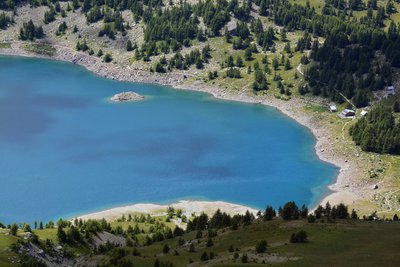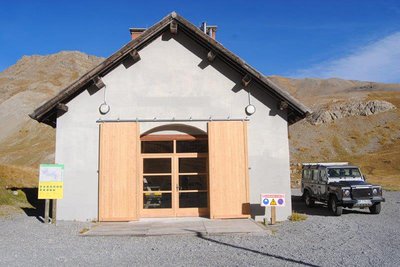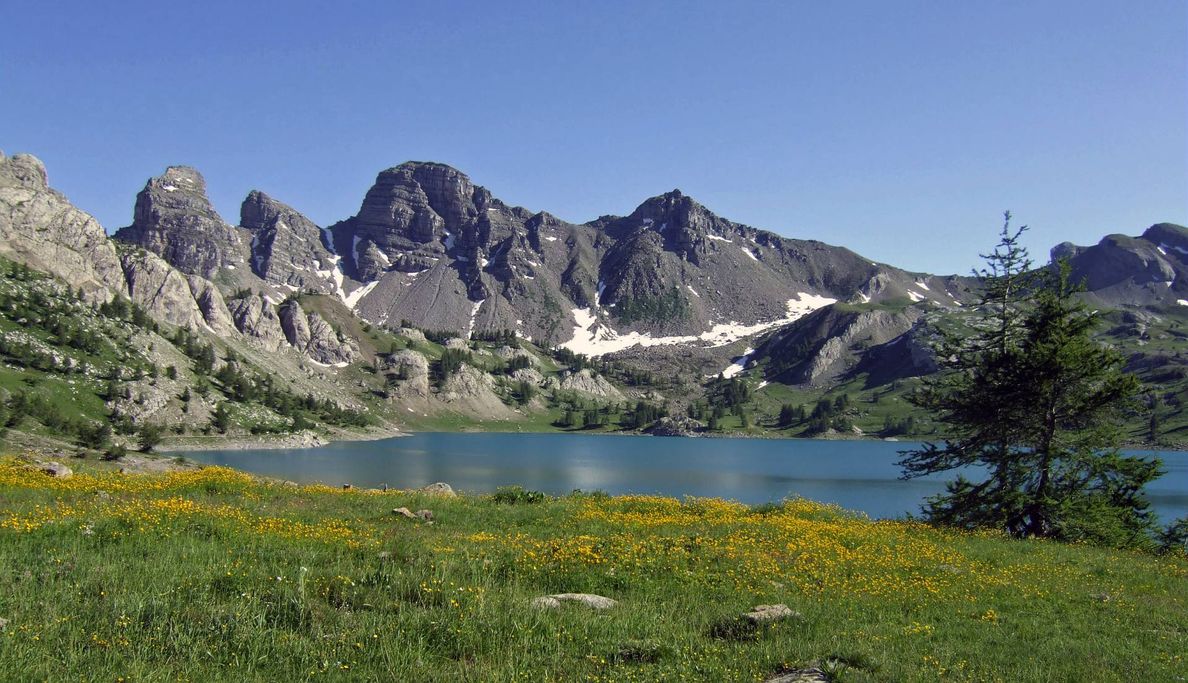
Lakes trek - West Mercantour Family Walk
2 steps
7 points of interest
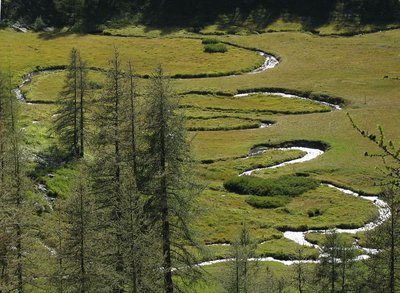
La Serpentine est le nom donné au torrent du Chadoulin, (affluent du Verdon), sur le haut de son cours, sur le plateau du Laus - Le Bouteiller Éric  Flora
FloraSecrets of the peat bog
This vast grassy expanse is one of the finest peat bogs in the Mercantour.
Peat bogs are rich in information: its depth is more than 8 metres. The succession of layers contains precious clues (grains of pollen, plant debris, etc…). They allow scientists to date things back as far as 9500 years ago.
These wetland areas which have little oxygen but plenty of nitrogen are home to flora adapted to the environment, namely bog plants: sphagnum moss, cotton grass with its gracious white cotton toupee as well as Alpine butterwort, one of the carnivorous plant species which can be found in France.
La Serpentine est le nom donné au torrent du Chadoulin, (affluent du Verdon), sur le haut de son cours, sur le plateau du Laus. - CULOTTA Jean-marc  Geology
GeologyThe grassy plateau of Laus
The grassy plateau of Laus has been a living memory of life for 9000 years. It was created as the glaciers shrank, a lake occupied the site. The fact that it was not very deep, in addition to the floods of sediment and organic matter flowing into it accelerated the process of filling in this lake. The biggest role was played by bryophytes: while their roots decompose, bryophytes keep growing upwards, trapping pollen. Analysing them allows us to retrace the history of existence in the area.
Despite gradually drying out for several thousand years, the process is still ongoing today. This environment is still damp and contains plants which are more readily associated with peat bogs. The winding curves of the Serpentine gleam on this plateau.
La Serpentine est le nom donné au torrent du Chadoulin, (affluent du Verdon), sur le haut de son cours. - LE BOUTEILLER Eric  Geology
GeologyWhere is this water coming from?
The beautiful outlet that you see before you is a singular case in hydrogeology: it is unique in the Mercantour and almost so in the Alps! Indeed, this water is escaping from Lac d’Allos which makes it a very rare case of a lake without an overflow and it is even more remarkable when you consider that this is the biggest natural high-altitude lake in Europe whose depth varies from 42 to 49 metres depending on the year.
The spring formed is called Chadoulin, an affluent of the left bank of the Verdon.
Le lac d'Allos - GOURON Claude  Lake
LakeLac d'Allos
Created by the glaciers of the quaternary period, Lac d'Allos is the biggest natural lake at this altitude in Europe (62ha). It waters come from the thawing snow as well as from springs, and they reach up to 42m in depth. It burgeons with more life than in the previous lakes: invertebrates, juvenile fish, brown trout and arctic char.
Lac d'Allos is an incredibly fragile environment due to the extreme conditions and the low number of plant and animal species. The arctic trout which exist here are, for reasons which remain unknown, affected by dwarfism. Any pollution or modification of the environment would be disastrous. But the presence of the National Park should today ensure that the lake can live in peace.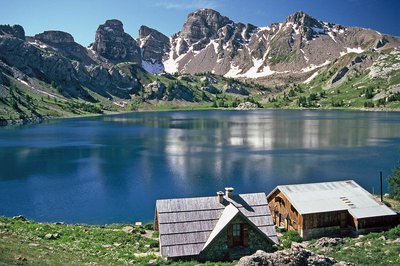
Le lac d'Allos, (2228 m), le refuge des bords du lac, en fond, les Tours du Lac, en début d'été - LAURENT Olivier  Refuge
RefugeLac d'Allos refuge
Refuge managed by the commune of Allos
Refuge-bar-restaurant
Capacity: 40 places
Warden: June to September. Shelter room located just above the refuge, open 365 days per year.
Tel. 04 92 83 00 24
http://refuge-du-lac-dallos.com
Val d’Allos Tourism Office: 04 92 83 02 81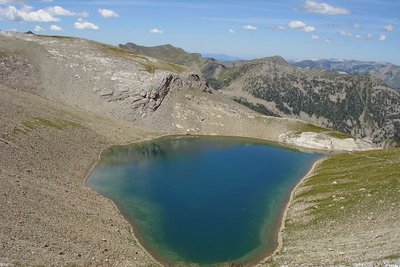
Le lac de la Petite Cayolle en été, dans sa combe minérale, vue plongeante vers le haut-Verdon. - COSSA Jean-Louis  Lake
LakeLac de la Petite Cayolle
It is a story of long ago, of the great glaciers which, as they slowly but unstoppably moved, shaped the Alps. Their flow hollowed out softer rocks and smoothened the harder ones, ripping any obstacles out of their way.
10000 years ago, the time of the great blanket of ice and snow came to an end and the glacier began shrinking, leaving behind it great hollows and terminal moraines: the glacial lakes found a home there, like Lac de la Petite Cayolle 3000 years ago.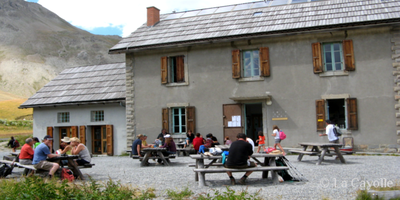
Refuge de la Cayolle - PNM/DR  Refuge
RefugeLa Cayolle refuge
Refuge managed by Mercantour National Park.
Capacity: 36 in refuge
Warden: 04 92 81 24 25 (from 15th June to 15th September) or 04 93 05 54 90 (all year if no reply at first number).
E-Mail: fan.refugedelacayolle@orange.fr
Website: www.refugedelacayolle.com
Description
- Departure : Park Laus
- Arrival : Park Laus
- Towns crossed : Allos, Uvernet-Fours, and Entraunes
Altimetric profile
Recommandations
Specific regulations concerning protected species in the Mercantour National Park.
This itinerary takes place along high-valley Alpine paths.
The accommodation sites listed are the only ones which are available along this route.
Before heading off on a hike, ensure that you have studied the safety advice.
If you are setting off on this hike in the early part of the season, you will need to take particular care as patches of snow can still be present in higher areas.
Access and parking
More information on access and parking: https://www.valdallos.com/lac-d-allos.html
Parking :
Report a problem or an error
If you have found an error on this page or if you have noticed any problems during your hike, please report them to us here:

